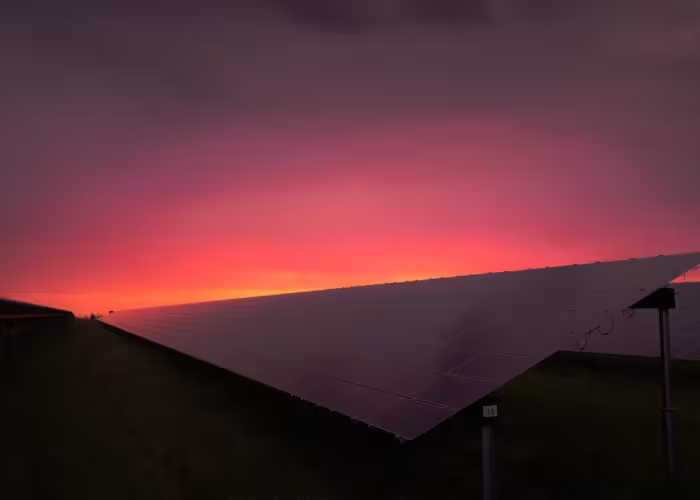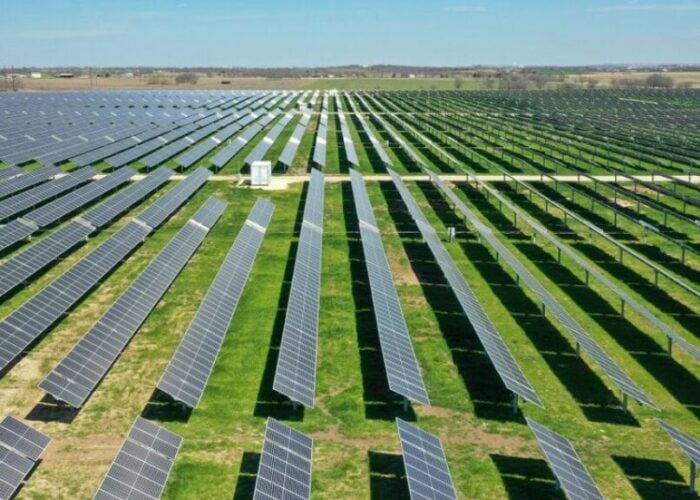
Over the past few years, hail has become a more prominent risk issue for PV projects in the US as thinner and larger modules have entered the market. This growing trend has led to an increase in module breakages, as seen last year in a paper from the National Renewable Energy Laboratory (NREL).
An added factor is that the increasing size of PV projects, with 100MW-plus projects not uncommon, means a higher risk of larger financial losses, even though the odds of being hit by hail are similar for a small or large-scale project, explains Jon Previtali, senior principal engineer at engineering advisory and test services provider VDE Americas.
Try Premium for just $1
- Full premium access for the first month at only $1
- Converts to an annual rate after 30 days unless cancelled
- Cancel anytime during the trial period
Premium Benefits
- Expert industry analysis and interviews
- Digital access to PV Tech Power journal
- Exclusive event discounts
Or get the full Premium subscription right away
Or continue reading this article for free
“The reason we’re seeing these very large claims is because the projects have become so large,” adds Previtali.
“We have these huge projects out there that are oftentimes decimated, unfortunately, by the hailstorm. We’ve done a number of forensic analyses on huge hail losses, and on average, we see 50% of the project destroyed with these hailstorms. That’s why you’re seeing these losses of 40, 50 and even US$100 million sometimes.”
This is despite the fact that hail-related damages only represent 6% of the total number of loss incidents but account for 73% of financial losses for US solar PV projects, according to a recent report from US-based climate insurance provider kWh Analytics.
Previtali explains that people should not rely on hearsay when it comes to the matter of hail risk in an area. “What you think you may personally know about the risk of hail in an area, as a non-expert in hail, you really have to look at the science [and make] a data-driven decision to understand what your hail risk is.
“Often, you have the situation where people don’t want to learn about the actual risk of hail, because they’re concerned that it’s going to create friction in the deal. And it’s just too large a risk to make that mistake.”
It is a risk that is present in most of the US, with a particularly high probability of hail risk in all the states east of the Rocky Mountains, as well as in Arizona, explains Previtali. “If you look at a world map and you look at hail risk around the world, the US, by far, has the largest area of hail risk and the most intense hail risk of any country in the world. And the reason is that the combination of the different elements that make up hail coming together creates a sort of perfect storm.”
Testing, testing, testing
Assessing if a project will be prone to hail risk is one part of the preparation; the other is making sure to test out the instruments – hail monitoring and stow – before a project is operational, but also once it is up and running.
Previtali highlights the need to do monthly testing of hail monitoring and stowing, which does not take too long to do and mentions that these tests can be done either early in the morning or in the evening, avoiding that the project loses any energy production. “You can also test it during days where it’s overcast and it’s not going to cause a lot of that lost energy,” says Previtali, adding that “One of the things that we recommend is that people stow early and often, so that they don’t wait until a hail storm is right upon them to stow. They [should] stow based on regional alerts or alerts that are set 30 miles or more away from the project.”
Previtali explains that taking this measure in advance will not lead to an energy production loss, since when hailstorms happen, it is overcast. “It definitely makes sense to stow early and stow often.”
Importance of data sets for hail forecasting
Although the data for weather forecasting has not changed much over time, the way it has been used has, says Previtali.
“Basically, what we do is we take data from a 100-by-100 kilometre area around the project location, and then we essentially weight it down; we focus it to a four-by-four kilometre area around the project location, and then we apply this variation of extreme value theory to forecast the risk of hail and use that data over the course of any time period.”
Previtali warns of the risk of using certain types of weather or hail forecasting tools, especially if these have population bias that can end up distorting the reality of a risk in a given area. He explains the risk of using hail forecast maps or tools that might not use or mix radar data – which uses an object detection system – with spotter data – where people inform of a situation they might see – which in itself is prone to population bias due to its nature. Less populated areas will less likely be able to inform of hailstorms, whereas more populated areas will inherently seem they have higher hail risks.
One such example, according to Previtali, is the Federal Emergency Management Agency (FEMA). This government-backed agency publishes a map showing hail risks, but Previtali believes this resource incorporates population bias that makes the hail risks seem higher around populated areas.
“That map is based mostly on financial claims, and we think it may be mixed in with spotter data, as opposed to radar data,” he says.
“It makes people think that there may be less hail risk in these remote, unpopulated areas where we’re putting in the largest solar power projects. Unfortunately, I think it’s a real disservice to the solar power industry that FEMA publishes this map.”
This is not a unique problem with hail, but also flooding, explains Previtali, and that is for the same reason highlighted before. This underscores the importance of mixing the data to help prevent population bias that can inadvertently diminish the risk of hail due to fewer claims or warnings from people in areas where the population is scarce.
‘Do not rely solely on AI for hail forecasting‘
When asked about the use of AI in hail forecasting or monitoring, Previtali says that he has not yet seen it widely used. The only use case is IBM’s weather tool.
“If someone came to me and said, ‘Should we rely on AI for hail monitoring and stow?’ I would say, ‘No!’ That is because AI makes mistakes, and software makes mistakes in general. In fact, what we recommend is that operators set up a redundant system so they do not have to rely solely on the software.”
Instead, Previtali recommends a two-phase approach. One is a site-specific alerting service, which sends alerts and “ideally automatically puts the trackers into hail position”. The other is something called watches, which are people who receive regional alerts from the National Weather Service using many different channels, such as text, email or phone calls.
“You can get a watch alert from the local National Weather Service for your county or your area, and that should be sent to human beings who are monitoring for hail,” explains Previtali.
And the angle at which the hail stow is positioned can make a big difference, says Previtali. “It depends on the location, but you can reduce the risk of hail loss from upwards of, on average, 50% of the project to 0% with a steep enough angle.”
Previtali explains that solar tracker producers such as Nextracker and Array Technologies, which offer trackers with a 75-77 degree hail stow position and even a 60-degree angle stow, can offer protection against hailstorms in most areas.
“The ideal scenario is to point the tracker facing away from the wind, because the wind pushes the hailstones to fall at an angle, and so if you can get the tracker to essentially be close to what that angle is, the hail will just miss most of the tracker and maybe just hit the frame at the top,” adds Previtali.
“One of the challenges, though, for trackers, is to be able to go into that high tilt hail-stow position at high wind speeds as well. Our reports that we generate for the industry show the co-occurrence of wind at different velocities and hail at different sizes, so people can understand how strong their trackers need to be to maintain a hail-stow position at high wind speeds that have been recorded in a particular area. Some trackers, particularly less expensive trackers, are not strong enough to maintain these hail-stow positions at high wind speeds, and so they have to go into a flat stow position about, say, 60 miles per hour, or sometimes 50 miles per hour. And that’s not good. You need to be in a hail-stow position, sometimes up to 70, 80 or even 90 miles per hour based on the location,” concludes Previtali.






